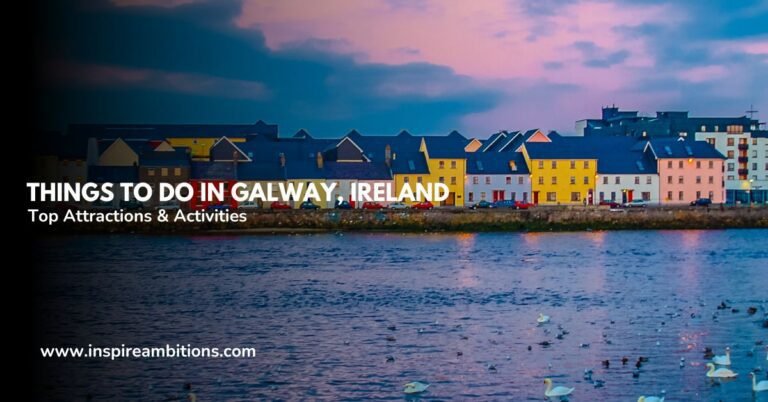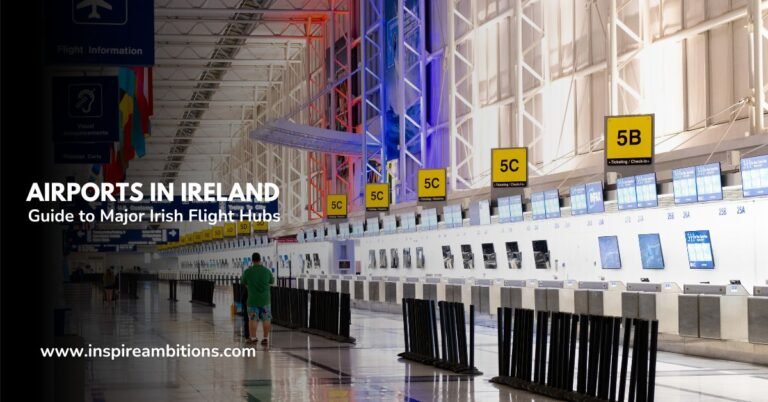Solo Travel Ireland – An Essential Guide for the Independent Explorer
Ireland beckons solo adventurers with its blend of lush landscapes and vibrant culture. Embarking on a solo journey to the Emerald Isle offers the quintessential European adventure that’s both enriching and accessible.
As you traverse this destination where English is the primary language, you’re never too far from a friendly chat or assistance, making navigation a breeze for English-speaking travellers.
Solo travel in Ireland is a tapestry of experiences ripe with opportunities to immerse yourself in the local atmosphere and create your adventure. You’ll find Ireland’s cities and towns, from the bustling streets of Dublin to the serene villages along the coast, are well-connected through public transportation.
This ease of getting around frees you up to explore the numerous historic sites, traditional pubs, and stunning natural landscapes that dot the island.
Travelling alone in Ireland also means you can tailor your expedition to your interests, whether that’s diving into the rich tapestry of Irish culture or seeking out the tranquil beauty of the countryside.
Ireland’s reputation for safety and its welcoming locals make it an ideal destination for solo travellers looking to forge their path and collect memories that will last a lifetime.
Planning Your Solo Adventure
When planning your solo trip to Ireland, itinerary precision, understanding transportation options, and choosing suitable accommodations are crucial for a seamless experience.
Itinerary Essentials
Crafting your solo travel itinerary for Ireland begins with pinpointing what you want to experience. Dublin’s rich cultural scene, the Cliffs of Moher’s majestic views, Galway’s vibrant streets, and the ancient wonders of the Giant’s Causeway are just a few highlights. Prioritize attractions based on proximity to create an efficient route.
For example, the Wild Atlantic Way is perfect for a multi-day excursion, while the Book of Kells in Dublin can be a day trip.
- Day 1-2: Explore Dublin, visit the Book of Kells, and enjoy live music in Temple Bar.
- Day 3: Take a bus to Galway; explore the Latin Quarter.
- Day 4: Journey through Connemara or take a boat tour to the Aran Islands.
- Day 5-6: Rent a car and drive the Ring of Kerry and Dingle Peninsula.
Ensure that you check the best time to visit, which is typically from June to September, for longer daylight hours and milder weather.
Transportation and Getting Around
In Ireland, getting around can be a breeze with the Irish Rail for cross-country trips and buses for short and long distances. Renting a car offers the most freedom, especially when visiting remote areas like the Wicklow Mountains or Connemara. Significant cities like Dublin and Belfast are well-connected by public transport, making them easily navigable on foot or via bus and train.
- By Train: Irish Rail offers extensive rail services, which are ideal for visiting significant towns.
- By Bus: Companies like Bus Éireann provide comprehensive coverage across the country.
- Renting a Car: This provides the flexibility to explore Ireland’s scenic routes, like the Wild Atlantic Way, at your own pace.
Remember, public transportation is less frequent in rural areas, so plan accordingly.
Accommodation Options
Ireland offers a range of accommodations to suit different budgets and preferences, with both cities and countryside locations providing a warm Irish welcome.
- Budget Stay: Hostels in cities like Dublin and Galway offer dorm beds and private rooms.
- Mid-Range: Guesthouses and B&Bs provide a more personal stay with local insight from your hosts.
- Higher-End: Hotels range from modern chains to luxury castles for those seeking an opulent experience.
Using services like Booking.com can aid in finding the perfect stay, with user reviews for added assurance. Always consider travel insurance to protect against unexpected changes or cancellations.
When it comes to travel safety, Ireland ranks highly on the Global Peace Index, but as with any destination, watch out for pickpockets and maintain general vigilance.
Cultural Insights and Local Interaction
Ireland is renowned for its vibrant culture and the warmth of its people. When you travel solo, you get a unique opportunity to immerse yourself in the local environment, have meaningful interactions, and create connections that enhance your travel experience.
Experiencing Irish Hospitality
Irish hospitality is legendary. When visiting Ireland, you can expect to be greeted with open arms, especially in the many family-run pubs and B&Bs where the hosts pride themselves on making you feel at home.
A simple “hello” can often lead to an invitation to join in on a guided tour of local hidden gems, where you can enjoy the friendliness and conversation of the locals.
Food, Music, and Entertainment
Ireland’s culinary scene ranges from cozy restaurants serving hearty Irish stews to food markets offering fresh, local produce. Don’t miss the chance to savour a pint of Guinness while enjoying live music at a local pub.
The country’s music scene is a blend of traditional Irish music and contemporary sounds, emblematic of the rich culture you’ll discover on your solo journey.
Historical and Natural Wonders
The history of Ireland is etched into every castle, museum, and historical site across the land, offering a glimpse into its rich history. Kayak along the scenic coasts or join a walking tour through rolling green landscapes peppered with sheep.
Visiting Newgrange in County Meath unlocks the ancient past of Ireland, while the scenic beauty shows you why they call it the Emerald Isle.






